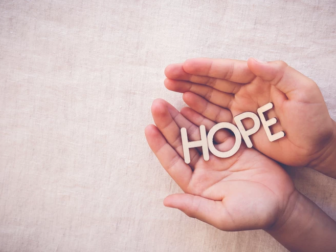When I was thinking about how I have personally experienced changes in my body and healing in ways that I was not expecting this past week, through the work of the Anat Baniel Method® Neuromovement® (ABM), three stories came to mind. These stories of healing and change in my life are not necessarily linked to a significant health issue or diagnosis but are profound and exciting for me and show that we can all benefit from learning to move better and in better organized ways.
Sprained Ankle
In the spring of 2019, I stepped into a hidden hole in the ground, twisting and spraining my ankle. I was unable to bear weight on that foot for a few days. As I was limping around, I could feel how quickly my brain was rewiring itself to use this new pattern of walking as its new default setting for walking. Once the ankle healed and the pain lessened, I knew that I didn't want to keep limping but it was so hard to change the new movement patterns that were now entrenched in my brain.
That spring, I was working at a greenhouse nursery business for the planting season. When I returned to work after the injury, I needed to do a lot of walking, carrying trays of plants. I spent the morning navigating narrow aisles on an uneven floor surface, forcing my brain to constantly pay attention to the way I was walking and how I took each step. When I walked out of the greenhouse to go on my break, I realized that I could now walk normally without a limp! All the walking I had done with all the variations of ground level, being careful of where I stepped and avoiding obstacles had calibrated my brain and allowed it to figure out how to walk in a natural, unimpeded way.
I had thought that the ankle had totally recovered since I could walk well and didn't have any pain. However, a few months later, in September, I started my first in-person ABM training. I don't usually sit cross-legged at home, but when sitting this way during training, I realized that my ankle wasn't as fully healed as I had thought. In this particular position, my ankle was stiff and uncomfortable. After I had a hands-on functional synthesis (FS) lesson with one of the trainers, I noticed an immediate change in my ankle. I felt more solid when standing, it no longer hurt when sitting on the floor, and my walking felt smoother and more fluid. I have not experienced any further issues with my sprained ankle since then - my brain just needed a little extra help from ABM.
Braces and jaw discomfort
As I look back over the years, I realize that I have been having TMJ (temporomandibular joint) issues and pain for many years and it wasn't improving. The TMJ is the joint that connects your mandible (lower jaw) to your skull. Before discovering ABM, I would rely on monthly massage sessions to relax my TMJ and help with the headaches.
When I started my training to become an ABM practitioner, my need for monthly massage appointments diminished. When I moved to a new province, I found that I did not have enough discomfort to go out and find a new massage therapist! My jaw pain and headaches were gone for about a year.
However, I then entered a period of intense stress and found that even with regular ABM transformational movement lesson (TML) sessions, my TMJ pain was returning. When I saw my dentist they said my bottom teeth were wearing down due to grinding/clenching my teeth - my habit when I'm concentrating or stressed. ABM work had helped my brain become aware of this habit and was helping me choose new patterns of movement to deal with stress, but I was still having issues with clenching my jaw at this extra-stressful time, and the additional challenges of the COVID pandemic did not help with my stress load either!
I chose to address the roots of my issues instead of going with the offered night guard for my teeth. My jaw and teeth were not aligned properly to allow freedom of movement when biting or at rest. I also knew that I was not only clenching my jaw at night, but also during the day. I met with my orthodontist and we agreed to proceed with Invisalign braces to give my jaw and teeth more room to move and more possibilities of movement. She also encouraged me to continue with my ABM work and the TML sessions as they decreased my stress and taught my brain new and better movement patterns.
At my first orthodontic consultation, my orthodontist asked about how I held my tongue in my mouth at rest. I had never considered this before. She did not tell me how it should be positioned but now I was curious. I spent the 45 minute drive home experimenting with how I held my tongue, using many of the 9 essentials of the Anat Baniel Method® Neuromovement®. I realized that at rest I had one default position of holding my tongue and my brain hadn't mapped any other possibilities. I had to use great awareness and slow down in order to try different variations of how I could hold my tongue. It was fascinating how different positions brought changes to my jaw position, teeth position and even my quality of breathing; I am no longer locked into only one resting tongue position, and it has helped reduce my TMJ pain significantly.
I have now been wearing my braces for six weeks. Any time that I feel discomfort from the process of realigning my teeth (usually day 3 and 4 of starting a new set of Invisalign trays), I go and do a TML session. My pain is gone by the end of the lesson and I am able to continue my day in a calmer and pain free state of mind. I had not considered that TMLs could help me with braces/teeth discomfort, but they are and I am grateful for the unexpected help! My TMJ pain is now gone and I look forward to the final finished product of better jaw alignment, more freedom of movement and the aesthetic results of aligned teeth.
Barefoot Walking
One surprising benefit I have experienced after my ABM Neuromovement® practitioner training has been my increased ability and enjoyment of walking barefoot outdoors. I often watch my children run around barefoot outdoors on all kinds of terrain. I remember doing the same as a child, but over the years going barefoot has become more uncomfortable and not as enjoyable.
After my ABM work, I've noticed that my feet are able to move all the individual joints better (there are 33 joints and 26 bones in the foot) and are able to move and form to the terrain. This is what makes it easy and enjoyable to walk barefoot again.
I had always thought that the soles of my feet needed to toughen up, but now I know that there is more than just tough skin needed. We need mobility, flexibility and the freedom to move that is often lost over years of wearing stiff and confining footwear.
I will celebrate summer and join my kids with being barefoot outdoors!





